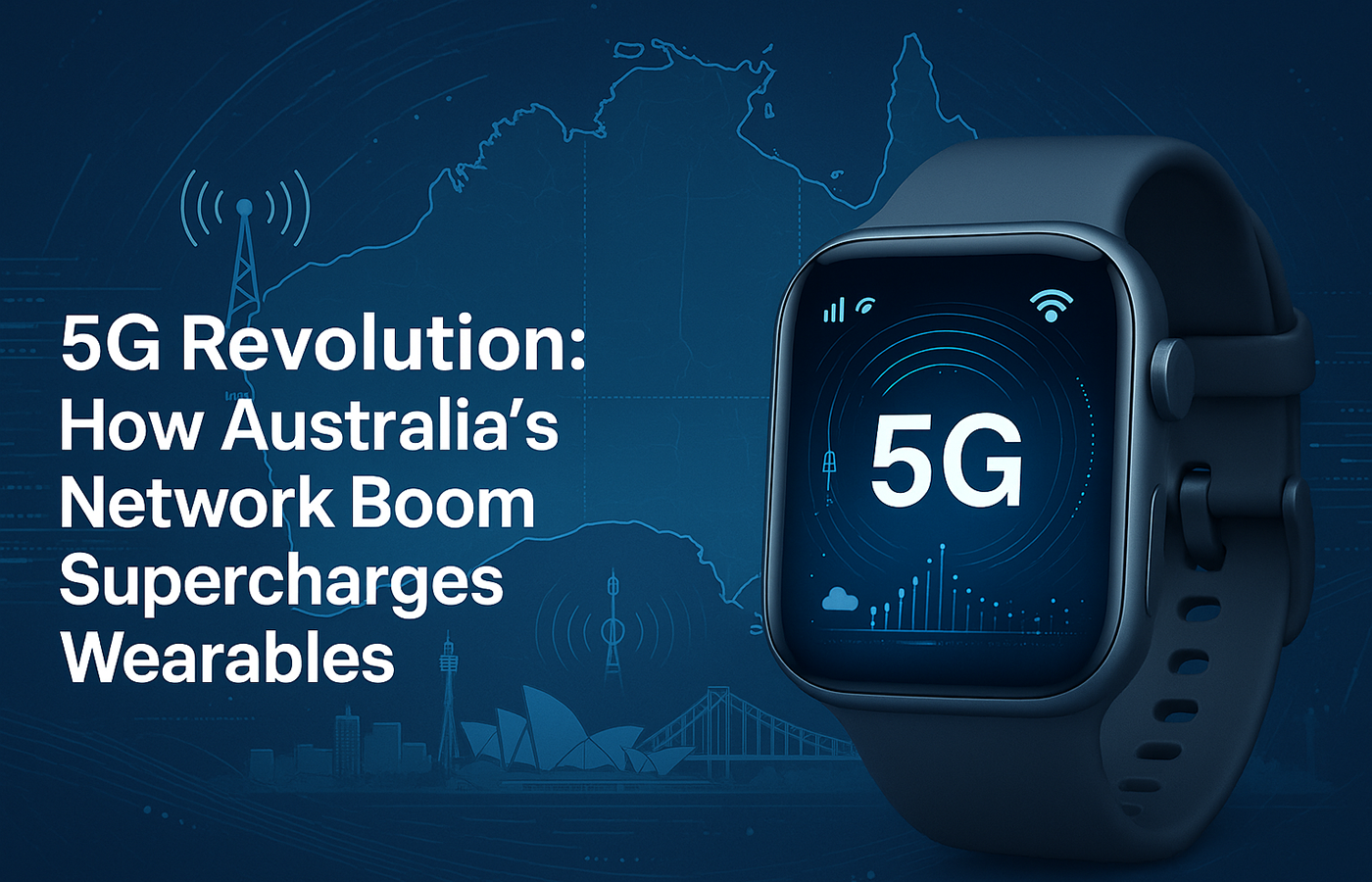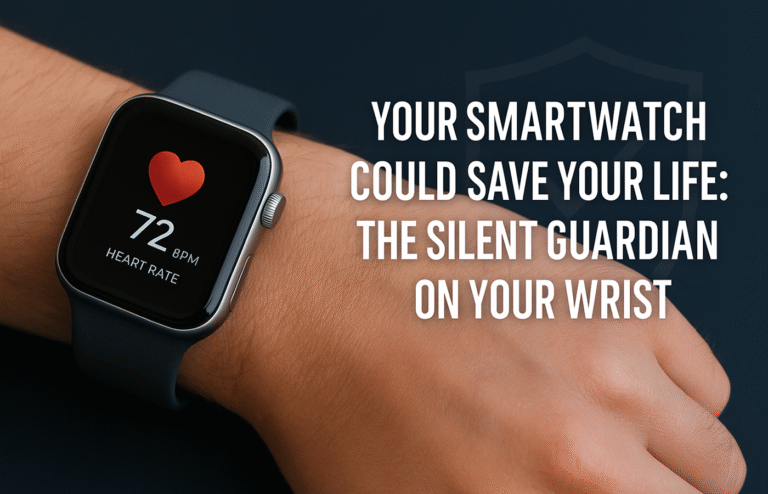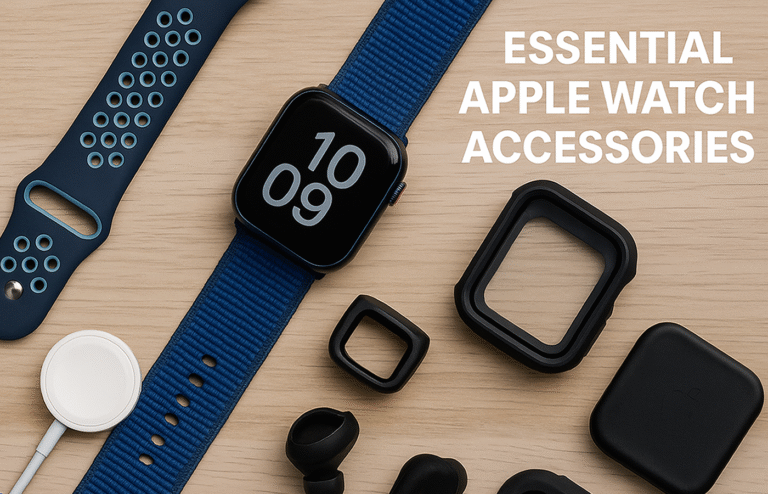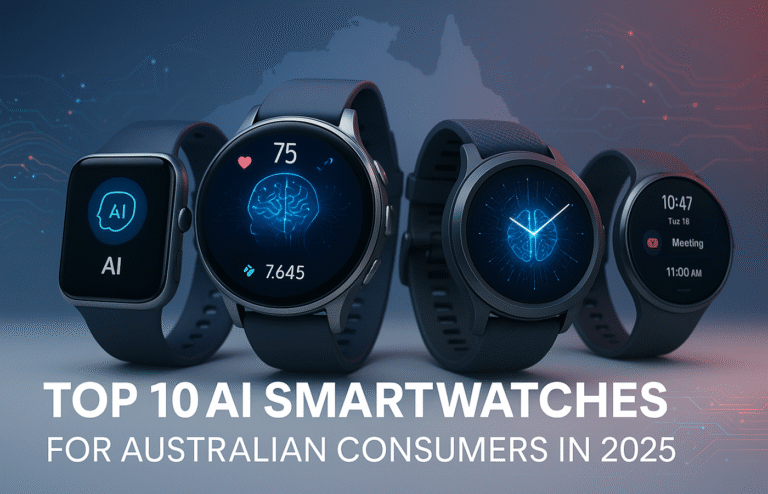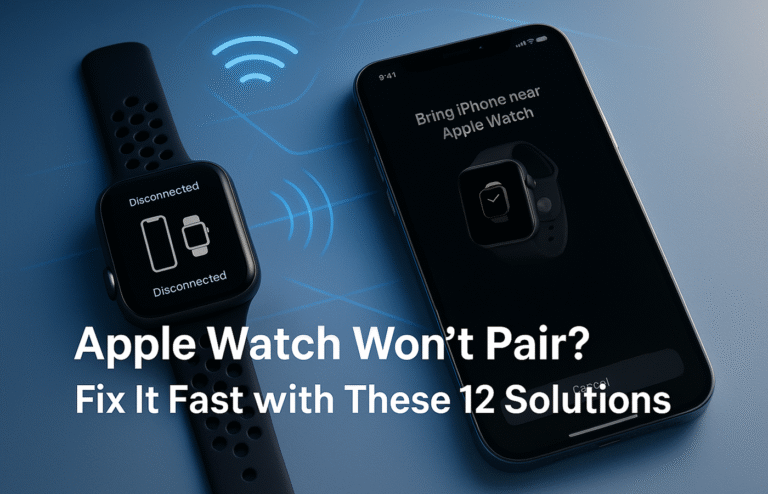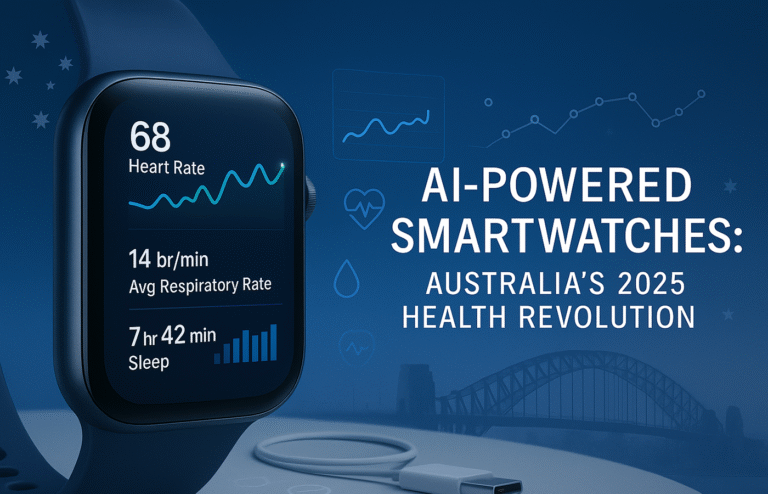5G Revolution: How Australia’s Network Expansion Supercharges Wearable Capabilities
Australia’s 5G rollout transforms wearables from simple fitness trackers into sophisticated health monitoring and augmented reality devices through ultra-low latency and continuous connectivity.
Network Coverage:
● Telstra: 99.7% population coverage across 3 million square kilometres reaching 1,600+ towns
● Vodafone: 85% coverage in ten largest cities including Sydney, Melbourne, Brisbane
● Optus: RedCap 5G technology optimised for wearables with 150Mbps speeds and extended battery life
Revolutionary Capabilities:
● Real-time health monitoring with instant emergency service alerts and precise location data
● Continuous health data streaming for preventive healthcare and chronic condition management
● Enhanced AR experiences through smart glasses with navigation, translation, and contextual information
● Independent smartwatch operation without smartphone dependency for calls and streaming
Market Impact: 5G healthcare market projected to grow from $3.69 billion (2025) to $30.93 billion (2032).
5G Revolution: How Australia’s Network Boom Supercharges Wearables
Australia’s 5G network expansion is transforming wearable technology from simple fitness trackers into sophisticated health monitoring and augmented reality devices. As carriers roll out fifth-generation networks across major cities and regional areas, wearable devices are gaining capabilities that seemed impossible just years ago—from real-time cardiac monitoring alerts sent directly to emergency services to AR glasses that overlay navigation information during outdoor adventures.
The impact extends far beyond faster download speeds. 5G’s ultra-low latency, massive device connectivity, and enhanced reliability are enabling wearable applications that require instantaneous response times and continuous data streams. For Australian users, this technological leap arrives at a crucial time when healthcare demands are rising, remote work is prevalent, and outdoor lifestyle activities demand reliable connectivity across vast distances.
Understanding how 5G networks are reshaping wearable capabilities—and which devices can best utilise these advances—will determine whether you’re maximising the potential of this technological revolution or missing out on transformative new features.
Australia’s 5G Network Landscape
Current Coverage and Expansion
Australia’s 5G rollout has achieved remarkable progress across major population centres. Telstra leads with coverage reaching 99.7% of the Australian population across more than 1,600 towns and communities, spanning approximately 3 million square kilometres. Vodafone’s 5G network now operates in more than 3,000 suburbs, covering 85% of the population in Australia’s ten largest cities and regions, including Sydney, Melbourne, Brisbane, Adelaide, Canberra, Perth, Gold Coast, Central Coast, Wollongong, and the Sunshine Coast.
Optus has established 5G coverage across major metropolitan areas and is expanding rapidly into regional territories. The carrier has also introduced Reduced Capability (RedCap) 5G technology, specifically designed to optimise wearable device connectivity with longer battery life and speeds up to 150Mbps download and 50Mbps upload.
Network Technology Advantages
Australia’s 5G implementation utilises multiple spectrum bands, including sub-6 GHz for broad coverage and mmWave technology for ultra-high speeds in dense urban areas. This multi-band approach ensures wearable devices can maintain connectivity across diverse Australian environments, from bustling city centres to regional areas.
The network architecture includes small cell stations positioned approximately every 250 metres in urban areas, providing the dense coverage necessary for wearable devices to maintain constant connectivity as users move through their daily routines.
Revolutionary Wearable Capabilities Enabled by 5G
Real-Time Health Monitoring and Emergency Response
5G’s ultra-low latency capabilities enable wearable devices to transmit critical health data instantaneously to healthcare providers and emergency services. Modern smartwatches can now detect irregular heart rhythms, falls, or other medical emergencies and immediately alert medical professionals with precise location data and comprehensive health metrics.
The 5G healthcare market is projected to grow from $3.69 billion in 2025 to $30.93 billion by 2032, with wearable devices playing a central role in this expansion. Remote patient monitoring through 5G-enabled wearables allows continuous tracking of chronic conditions like diabetes, hypertension, and heart disease without requiring frequent hospital visits.
For Australian users, this capability proves particularly valuable given our geographic challenges. A person experiencing a cardiac event in remote Queensland can now have their smartwatch automatically alert emergency services with precise location coordinates and real-time health data, potentially saving critical response time.
Enhanced Augmented Reality Experiences
5G’s high bandwidth and low latency enable sophisticated AR applications that were previously impossible on wearable devices. Smart glasses can now overlay real-time navigation information, translate foreign text instantly, or provide contextual information about landmarks and locations.
These AR capabilities benefit Australian outdoor enthusiasts, tourists, and professionals working in remote locations. Hiking in the Blue Mountains with AR-enabled glasses can provide trail information, weather updates, and emergency navigation assistance, all while maintaining connection to emergency services.
Continuous Health Data Streaming
Unlike previous generations that required periodic data synchronisation, 5G enables continuous health data streaming from wearables to healthcare providers. This real-time monitoring capability supports preventive healthcare by identifying concerning trends before they become serious health issues.
Wearable devices can now monitor blood oxygen levels, heart rate variability, sleep patterns, and activity levels continuously, transmitting this data to AI systems that analyse patterns and provide early warnings for potential health problems.
Device Categories Benefiting Most from 5G
5G-Enabled Smartwatches
Modern smartwatches represent the most immediate beneficiaries of 5G connectivity. Devices can now operate independently from smartphones, enabling users to make calls, stream music, access applications, and receive real-time notifications without carrying additional devices.
The global smartwatch market is projected to reach $96.17 billion by 2027, with 5G integration serving as a major growth driver. Australian users benefit from standalone cellular capabilities that maintain connectivity during outdoor activities, travel, or professional situations where carrying a smartphone isn’t practical.
Medical and Health Monitoring Wearables
Specialised medical wearables utilising 5G connectivity can provide continuous monitoring for serious health conditions. Devices can transmit ECG data, blood glucose levels, blood pressure measurements, and other vital signs in real-time to healthcare providers.
This capability proves particularly valuable for Australia’s aging population and those managing chronic conditions in remote areas where regular medical access is limited. 5G-enabled medical wearables can bridge the gap between patients and healthcare providers across vast distances.
Smart Fitness and Sports Devices
Professional athletes and fitness enthusiasts benefit from 5G-enabled wearables that provide real-time coaching, performance analysis, and safety monitoring. Devices can stream high-definition video, provide instant feedback on form and technique, and connect to cloud-based AI systems for personalised training recommendations.
Australian sports professionals and outdoor enthusiasts can access sophisticated performance analytics previously available only in laboratory settings, now delivered in real-time during training sessions or competitions.
Carrier-Specific Offerings and Considerations
Telstra’s Network Advantages
Telstra’s extensive coverage makes it the preferred choice for users requiring reliable 5G connectivity across Australia’s diverse geographic regions. The network’s reach into regional and remote areas ensures wearable devices maintain connectivity during travel or outdoor activities.
Telstra’s 5G network supports both consumer and enterprise wearable applications, with network slicing capabilities that can prioritise critical health monitoring traffic over less urgent data streams.
Vodafone’s Standalone 5G Innovation
Vodafone’s implementation of standalone 5G (5G SA) technology provides advantages for wearable devices by enabling direct connection to 5G networks without requiring 4G infrastructure. This approach can improve battery life and reduce latency for compatible devices.
The carrier’s focus on 5G SA positions it well for future wearable applications that require the full capabilities of 5G technology rather than enhanced 4G implementations.
Optus RedCap Technology
Optus’s RedCap implementation specifically targets wearable and IoT devices, providing a “Goldilocks” solution between high-speed 5G and low-power IoT connectivity. RedCap offers speeds up to 150Mbps while extending battery life significantly compared to standard 5G implementations.
This technology proves particularly relevant for wearable devices that require sustained connectivity without frequent charging, making it ideal for health monitoring applications, fitness tracking, and other always-on wearable functions.
Geographic and Usage Considerations
Urban vs Regional Performance
5G performance varies significantly between urban and regional areas, affecting wearable device capabilities accordingly. Metropolitan areas benefit from dense small cell networks providing ultra-high speeds and low latency, enabling the most sophisticated wearable applications.
Regional areas may experience reduced speeds and higher latency, but coverage continues expanding. Australian users should consider their primary usage locations when selecting 5G-enabled wearables and carrier plans.
Outdoor and Remote Applications
Australia’s outdoor lifestyle creates unique demands for 5G-enabled wearables. Devices must maintain connectivity during hiking, camping, beach activities, and other outdoor pursuits while providing safety and navigation features.
5G networks’ improved penetration and coverage help ensure wearable devices remain connected in challenging environments, though users venturing into truly remote areas should still carry backup communication devices.
Professional and Industrial Use
Australian industries increasingly adopt 5G-enabled wearables for workplace safety, productivity monitoring, and training applications. Mining operations, construction sites, and agricultural enterprises utilise wearable devices that can transmit real-time safety data, environmental monitoring, and worker location information.
These professional applications often require carrier-specific features like network slicing, priority traffic handling, and enhanced security protocols.
Battery Life and Performance Implications
Power Consumption Challenges
5G connectivity demands significantly more power than previous network generations, creating challenges for wearable device battery life. Manufacturers are addressing this through improved chip efficiency, adaptive connectivity protocols, and selective 5G usage.
RedCap technology specifically addresses power consumption concerns by providing optimised 5G connectivity that extends battery life while maintaining necessary performance levels for wearable applications.
Adaptive Connectivity Solutions
Modern 5G-enabled wearables employ intelligent connectivity management, automatically switching between 5G, 4G, and Wi-Fi based on application requirements and power constraints. This approach maximises battery life while ensuring critical functions maintain optimal connectivity.
Users can expect all-day battery life from premium 5G-enabled wearables, though heavy usage of streaming features, video calls, or continuous health monitoring may require daily charging.
Future Applications and Development
Emerging Use Cases
5G’s continued development will enable new wearable applications including:
Holographic Communication: Ultra-low latency 5G networks may support holographic video calls through AR glasses or other wearable displays.
Real-Time Language Translation: Immediate translation of spoken conversations through smart earbuds or glasses, particularly valuable for Australia’s multicultural environment and tourism industry.
Advanced Biometric Monitoring: Continuous monitoring of previously difficult-to-measure health metrics like blood glucose, hydration levels, and stress hormones.
Timeline for Advanced Features
Many advanced 5G wearable features will become available throughout 2025-2027 as network coverage expands and device capabilities mature. Australian users can expect gradual rollout of sophisticated applications as carriers optimise networks for wearable-specific requirements.
Choosing 5G-Enabled Wearables for Australian Use
Device Compatibility Considerations
When selecting 5G-enabled wearables, Australian users should verify compatibility with local carrier frequencies and ensure devices support the specific 5G bands used in their primary usage areas. Not all international 5G devices work optimally on Australian networks.
Premium devices from major manufacturers typically offer the broadest compatibility, while budget options may have limited band support affecting performance in certain regions.
Carrier Plan Selection
5G wearable functionality often requires specific data plans or add-on services. Users should compare carrier offerings for wearable-specific plans, which may include features like shared data pools, family connectivity options, or optimised pricing for multiple connected devices.
Consider factors like coverage in your specific areas, international roaming capabilities if you travel, and carrier-specific features like network slicing or priority traffic handling.
Cost-Benefit Analysis
5G-enabled wearables typically command premium pricing compared to Wi-Fi-only models. Users should assess whether 5G capabilities justify additional costs based on their specific usage patterns, lifestyle requirements, and the value of always-on connectivity.
For users who primarily use wearables for basic fitness tracking or occasional notifications, 5G capabilities may not justify premium pricing. However, those requiring health monitoring, professional applications, or outdoor safety features may find 5G connectivity essential.
The Future of Connected Wearables in Australia
Australia’s 5G network expansion is fundamentally transforming wearable technology from optional accessories into essential health, safety, and productivity tools. As coverage continues expanding and device capabilities mature, we’re entering an era where wearables provide capabilities that rival traditional computing devices while maintaining the convenience and portability that makes them indispensable.
The convergence of Australia’s robust 5G infrastructure with advancing wearable technology creates opportunities for applications we’re only beginning to explore. From remote healthcare delivery to industrial safety monitoring, 5G-enabled wearables are becoming critical components of Australia’s digital infrastructure.
For consumers, the choice isn’t whether to embrace 5G wearables, but rather which devices and carriers best align with their specific needs and usage patterns. As this technology continues evolving, early adopters will benefit from capabilities that transform how we approach health, safety, communication, and daily productivity.
The 5G wearable revolution is here, and Australia’s network infrastructure ensures we’re positioned to maximise its transformative potential.

